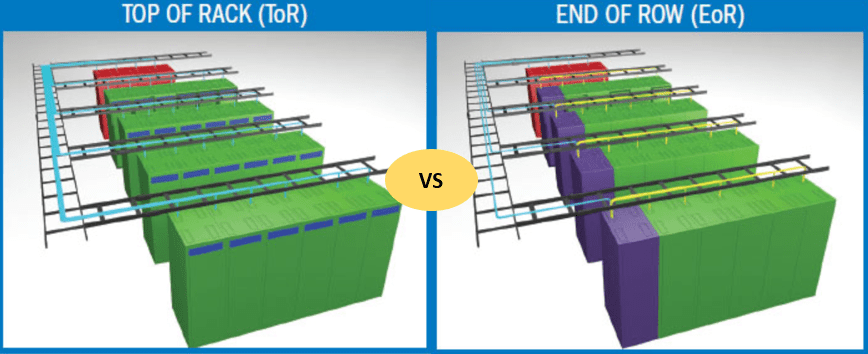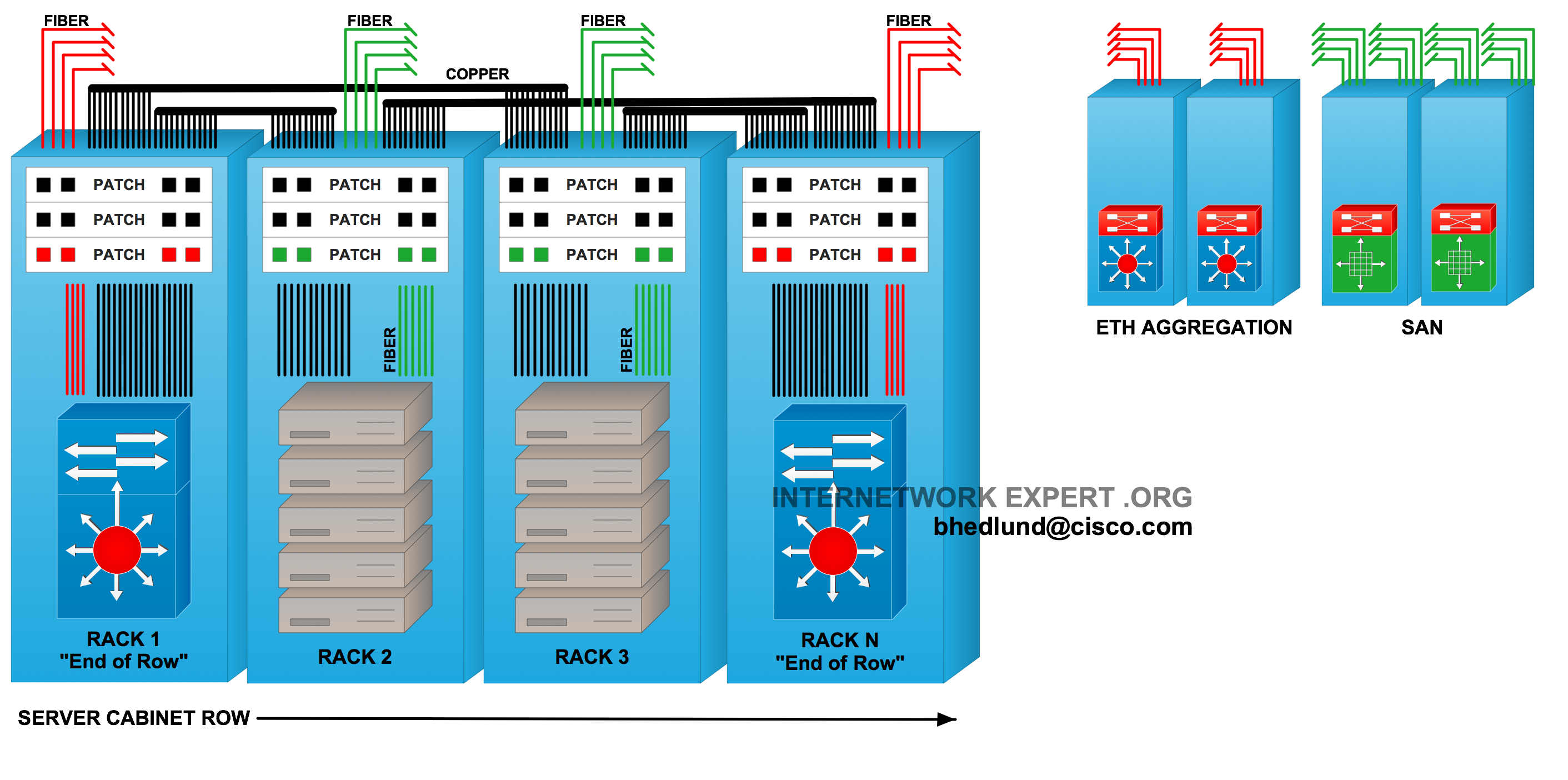Top of the Rack vs End of the Row

Top of Rack (ToR) and End of Row (EoR) are two common infrastructure designs for data centers. In this post, we will mainly discuss the differences between these two approaches.
In the Top of Rack design, servers connect to one or two Ethernet switches installed inside the rack so that all copper cabling for servers stays within the rack (from the server to the rack switch). Therefore, there is no need for an expensive infrastructure of copper cabling running between racks and throughout the data center. The Ethernet switch links the rack to the data center network with fiber running directly from the rack to a common aggregation area.
Each rack can be treated and managed like an individual and modular unit within the data center. Any network upgrades or issues with the rack switches will generally only affect the servers within that rack, not an entire row of servers. Given that servers connect with very short copper cables within the rack, there is more flexibility and options in terms of what that cable is and how fast of a connection it can support.
One significant drawback of the Top of Rack design is the increased management domain. In a large data center with many racks, a Top of Rack design can quickly become a management burden by adding many switches to the data center that are each individually managed. These switches demand higher port densities in the aggregation switches, even if there is a single connection to each redundant aggregation switch. The more ports you have in aggregation switches, the more likely you are to face potential scalability constraints.

In the End of Row design, each server in individual racks is required to connect to a common aggregation switch directly, without connecting to individual switches in each rack. Racks are typically lined up side by side in a row and a rack or cabinet is placed at either end of the servers row for the purpose of providing network connectivity to those servers. For a redundant design, there might be two bundles of copper to each rack, each running to opposite End of Row network racks.
The End of Row network switch is typically a modular chassis-based platform that supports hundreds of server connections. Typically there are redundant supervisor engines, power supplies, and overall better high availability characteristics than typically found in a Top of Rack switch.
Unlike Top of Rack where each rack is its own managed unit, with End of Row the entire row of servers is treated like one pod within the data center. Network upgrades or issues at the End of Row switch can be service impacting to the entire row of servers, but, on the other hand, there are fewer switches to manage compared to a Top of Rack design.

The one thing all of the above designs have in common is that they each link to a common aggregation area with fiber. Some pods may employ End of Row copper cabling, while another pod may employ top of rack fiber, with each pod linking to the common aggregation area with fiber. This allows for flexibility in the design choices made as the data center grows, pod by pod.
Top of Rack and End of Row data center designs are both common deployments for data center architecture. Considering that each type has benefits and drawbacks, you cannot tell which one is best, just which one is the most suitable.